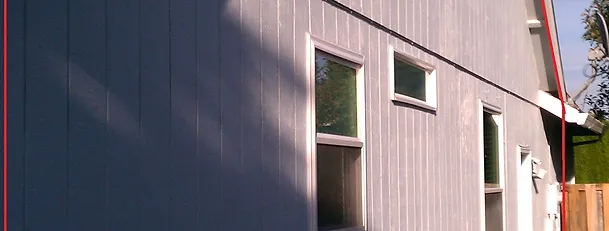How To Install Z Flashing Existing Siding
DIY House Addition: How To Properly Flash & Trim Windows. Installed and the kind of flashing you. Flashing piece works when we install the siding. Feb 09, 2012 Re: Window Head Flashing w/T1-11 Siding You didn't say if this is new construction or retrofitting a window into existing siding. How to Install Vinyl Z Flashing With J. To sealing out moisture when installing a deck. Is sealed out and damage to the existing siding is.

In this video, This Old House general contractor Tom Silva shows how to fabricate custom-fit aluminum window flashing. Cut a piece of 8-inch-wide aluminum flashing to length using aviation snips; you could also slice through it with a sharp utility knife. Measure for the leading edge of the flashing to determine how far it'll hang down in front of the window trim.
Installing Damp Proof Membrane. Use a metal brake or homemade bending brake to bend the leading edge of the flashing passed 90 degrees. Make a gauge block from scrap wood to represent the thickness of the window casing and trim. Slide the flashing into the brake, using the gauge block to position it at the proper depth.
Bend the flashing to create the wide flange that extends up the wall. If using a homemade bending jig, set the 2x4 tapping block on top of the bent flashing and strike hit it with a hammer before removing it from the jig.
A: Tom Silva replies: Galvanized Z-flashing, so-called because of its Z-shaped profile, is used to keep water from getting through the horizontal joints between sheets of plywood siding. You set the flashing on the top edge of each piece of plywood on a fat bead of caulk and hold it in place with just the heads of roofing nails driven into the sheathing. Don't nail through the flashing itself or it will eventually leak. Download Windows Live Mail Portugues Para Xp. Overlap the ends of the flashing by at least 2 inches and run a bead of caulk between the pieces at the overlap. And just before the plywood goes on, caulk along the top edge of the metal as extra protection against water. Before installing a new plywood section, seal its edges to prevent them from soaking up moisture.
Use either a primer, if you plan to paint it, or a water-repellent preservative, if you plan to use stain. Also, as you fasten the plywood in place, make sure its bottom edge is 1/8 to 1/4 inch above the flashing's horizontal leg so water can drain away easily from the joint. Finally, unless you like the look of weathered plywood, apply the first coat of finish within two weeks of installing it, before sunlight and water start to degrade the wood surface.